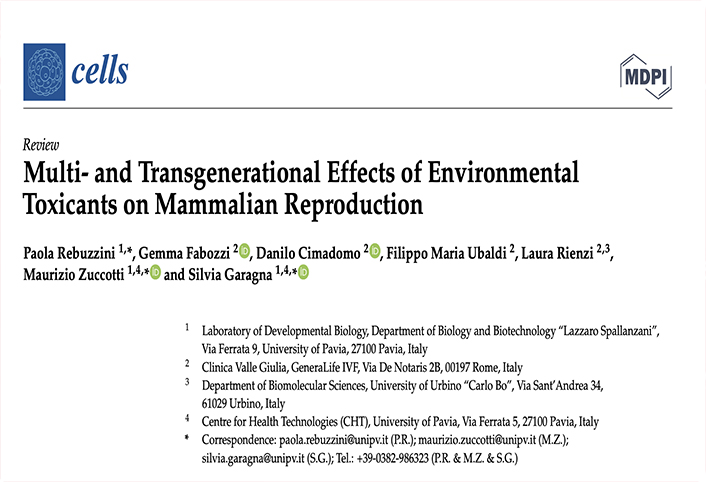
Paola Rebuzzini, Gemma Fabozzi, Danilo Cimadomo, Filippo Maria Ubaldi, Laura Rienzi, Maurizio Zuccotti, and Silvia Garagna
Cells 2022, 11,3163. https://doi.org/10.3390/ cells11193163. Received: 30 July 2022 Accepted: 3 October 2022 Published: 9 October 2022
Abstract
Environmental toxicants (ETs) are an exogenous chemical group diffused in the environ- ment that contaminate food, water, air and soil, and through the food chain, they bioaccumulate into the organisms. In mammals, the exposure to ETs can affect both male and female fertility and their reproductive health through complex alterations that impact both gametogeneses, among other processes. In humans, direct exposure to ETs concurs to the declining of fertility, and its transmission across generations has been recently proposed. However, multi- and transgenerational inheritances of ET reprotoxicity have only been demonstrated in animals. Here, we review recent studies performed on laboratory model animals investigating the effects of ETs, such as BPA, phthalates, pesticides and persistent contaminants, on the reproductive system transmitted through generations. This includes multigenerational effects, where exposure to the compounds cannot be excluded, and transgenera- tional effects in unexposed animals. Additionally, we report on epigenetic mechanisms, such as DNA methylation, histone tails and noncoding RNAs, which may play a mechanistic role in a nongenetic transmission of environmental information exposure through the germline across generations.